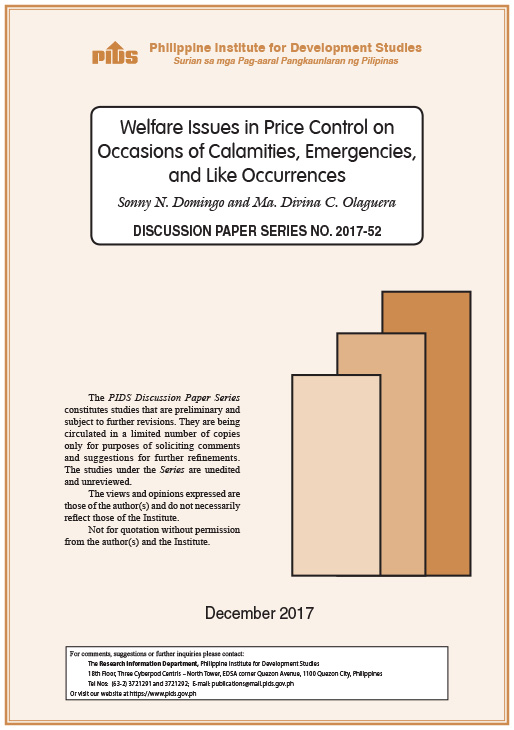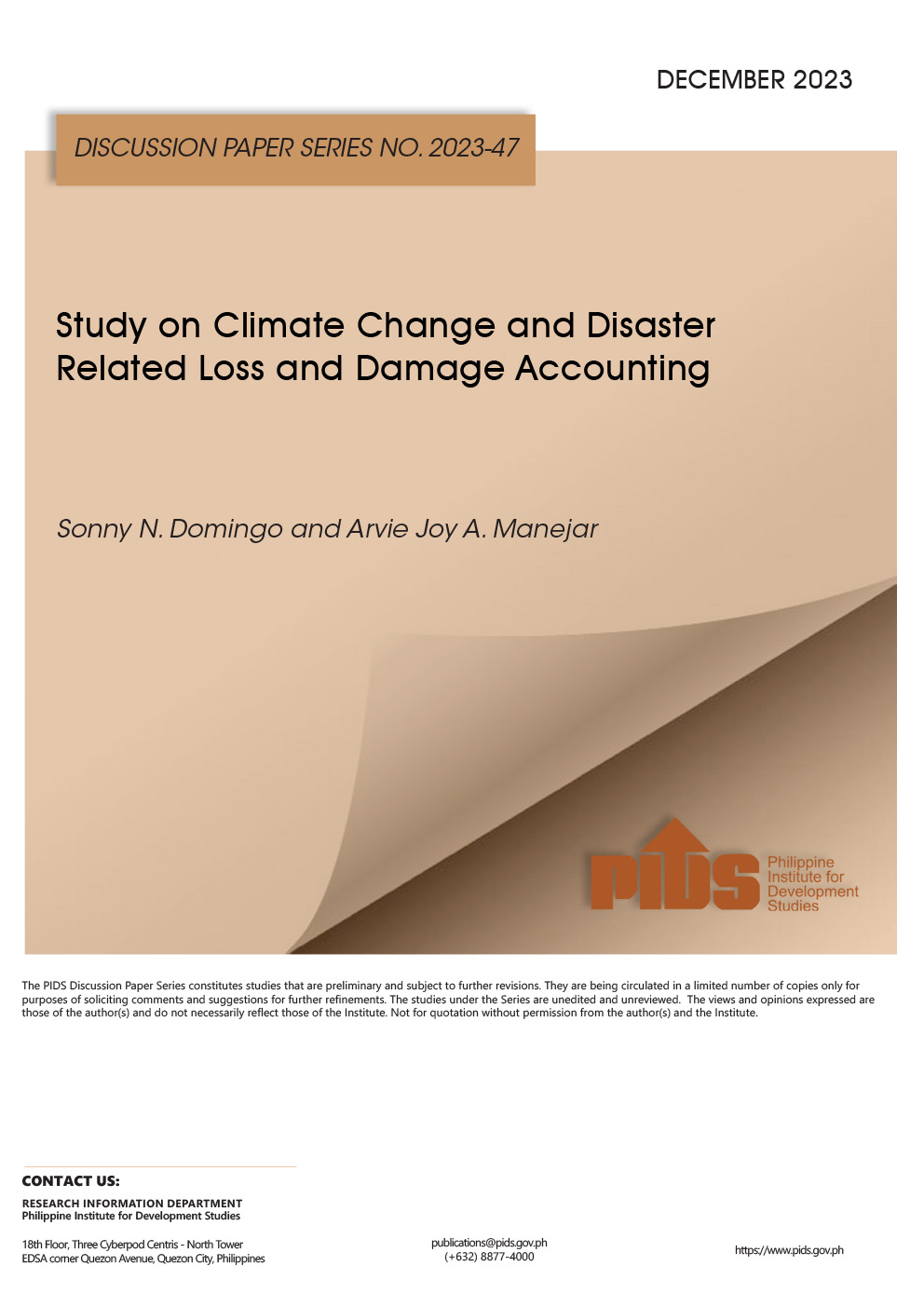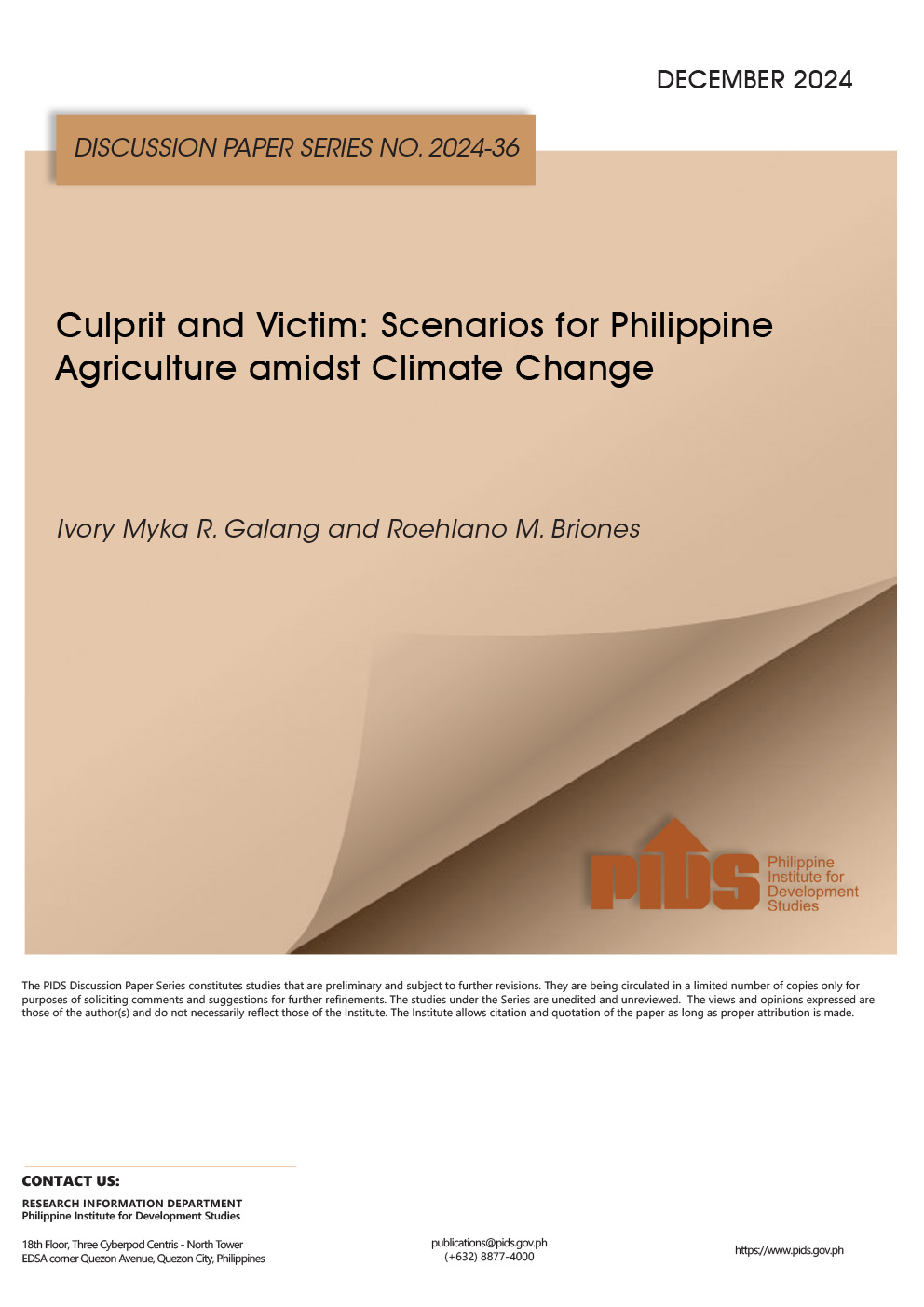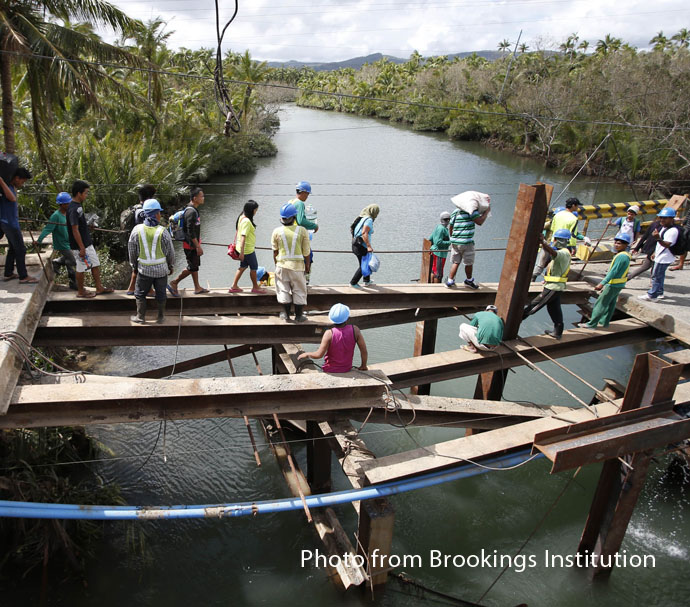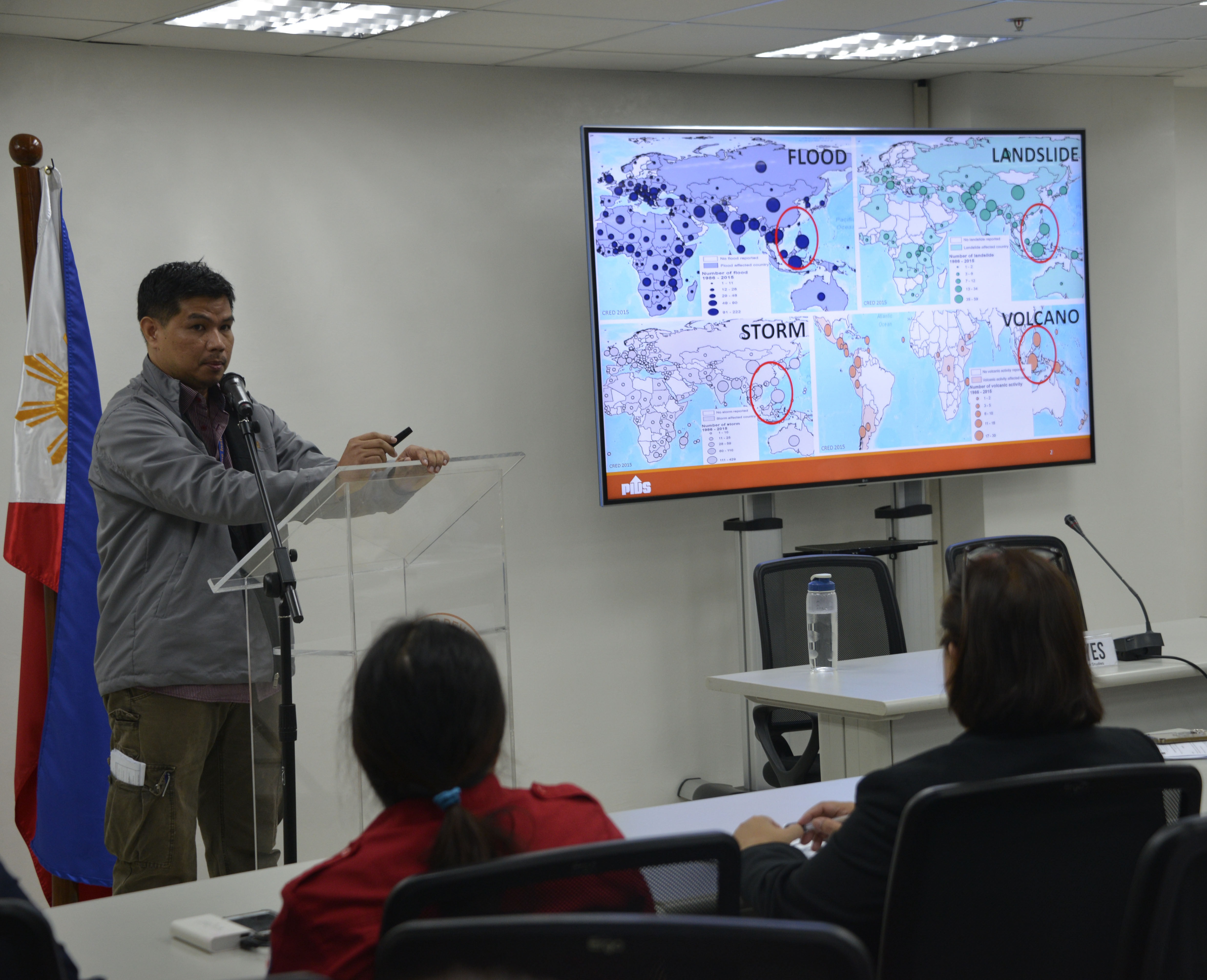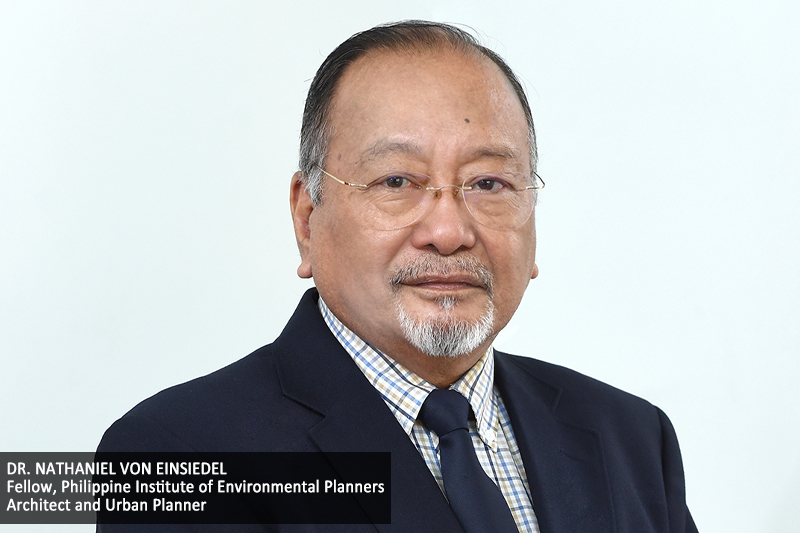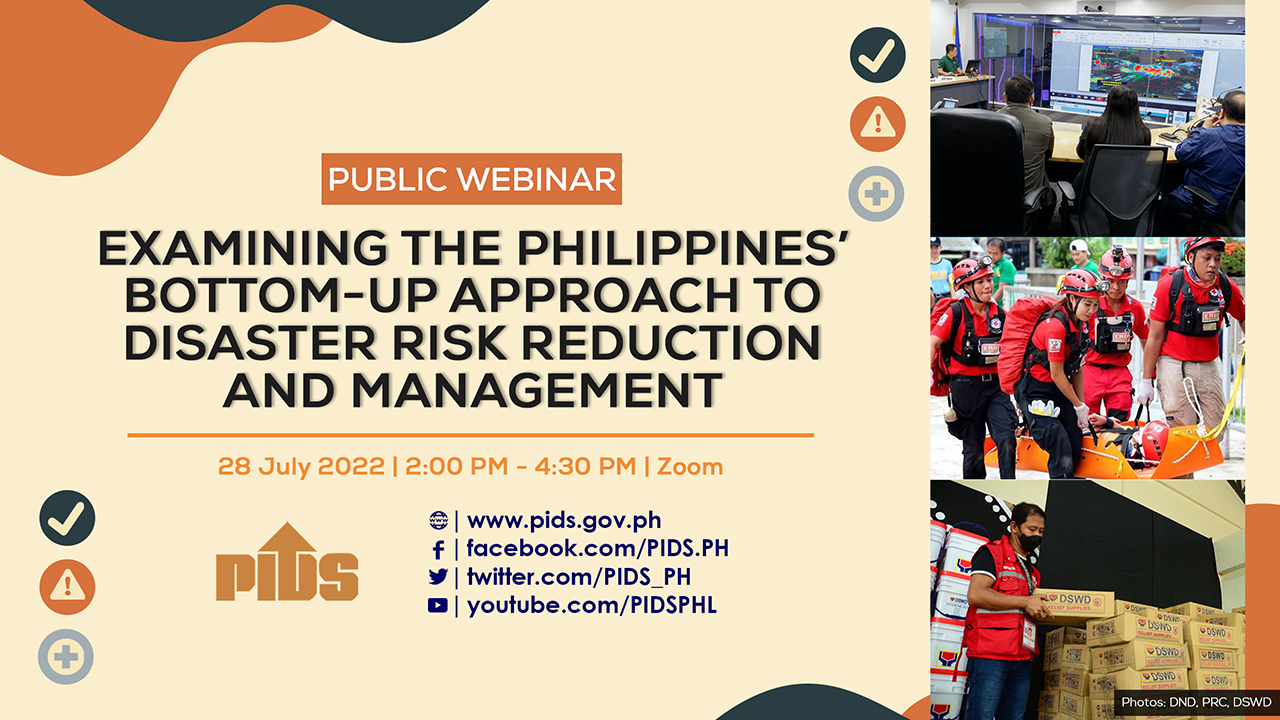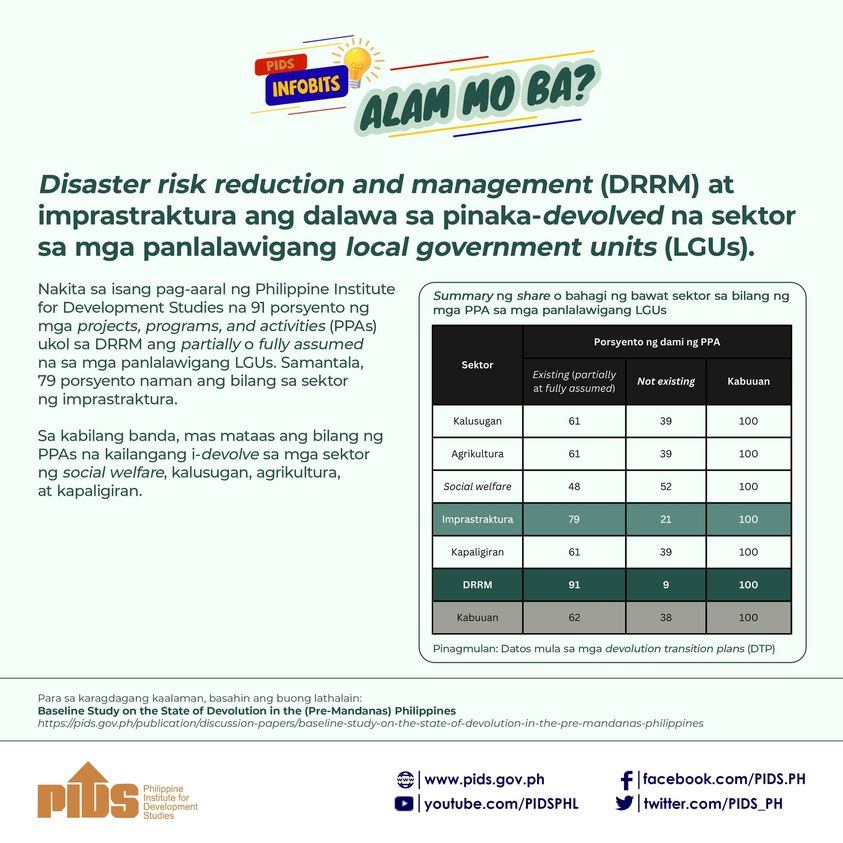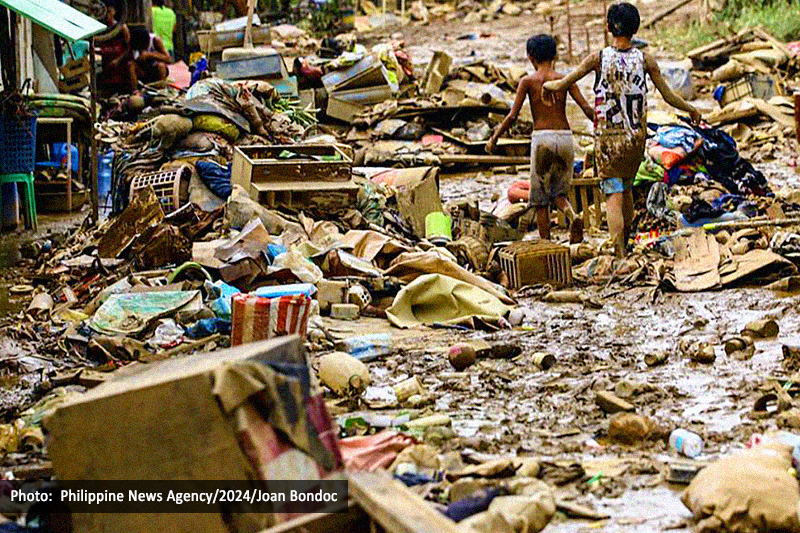
A comprehensive approach to disaster loss and damage accounting is crucial for accurately assessing the true costs of natural and man-induced calamities. This is vital for enhancing the country’s resilience amid increasing exposure and vulnerability to disaster events.
In a recent forum hosted by the Socioeconomic Research Portal for the Philippines, an initiative by the Philippine Institute for Development Studies (PIDS), PIDS Senior Research Fellow Dr. Sonny Domingo emphasized the need for an integrated disaster loss and damage accounting framework. In his research titled, “Study on Climate Change and Disaster Related Loss and Damage Accounting”, Domingo explained that such a framework should capture not only immediate economic damages but also non-economic and long-term socio-economic impacts.
Domingo argued that most current loss and damage accounting methodologies, both international and local, only monitored and reported economic short-term direct impacts. There is a need to appropriately account for the non-monetary, and long-run socioeconomic impacts of disasters. Among those that should be considered are loss of culture and health burdens; disruptions in productivity, productivity flows; ecological integrity costs; and intergenerational and other long-term damages
He stressed that adopting a more holistic approach will provide a clearer picture of the true costs of disasters, enabling more informed policy decisions and effective financial planning for eventual rehabilitation and recovery processes.
The Philippines currently employs the Post-Disaster Needs Assessment (PDNA), Post-Conflict Needs Assessment (PCNA), and Damage and Loss Assessment (DaLA) in assessing losses and damages (L&D) post-disaster events. However, Domingo highlighted the benefits of incorporating risk assessment methodologies, similar to practices in developed countries, to enhance the country’s disaster accounting framework.
Unlike PDNA, PCNA, and DaLA, which are more reactive, risk assessment methodologies provide a proactive approach to disaster management by also considering potential threats and pre-disaster projections before actual loss and damages are incurred.
This need for a more robust disaster accounting framework cannot be overstressed given the Philippines’ consecutive number one ranking as the country most at risk in the World Risk Report for the years 2022 and 2023. The ranking reflects the country’s high exposure to natural hazards, vulnerability, and limited adaptive capacity.
The financial aspect of disaster management is equally critical. The United Nations Environment Programme has reported a significant shortfall in adaptation finance for developing countries, including the Philippines. The estimated annual need for L&D ranges between USD 300-500 billion, with projections nearing USD 600 billion by 2030.
Despite the presence of various local and international fund sources, the country faces inefficient and suboptimal fund utilization due to recurring bureaucratic hurdles. These include issues related to institutional platform and capacity, method application, process inefficiency, monitoring and evaluation lapses, and poor and inadequate responses.
A positive development is the operationalization of the UN Loss and Damage Fund, a new financial mechanism established at COP27 and COP28 to support developing countries that are particularly vulnerable to the adverse effects of climate change. The fund aims to help compensate developing countries for losses and damages caused by climate-related disasters such as typhoons, floods, droughts, and sea level rise. However, the same bureaucratic inefficiencies were flagged as potential concerns if and when the Philippines can avail of this global fund.
In response to these challenges, Domingo outlined several key recommendations for improving disaster accounting and management in the Philippines. There is a need to strengthen institutional capacities and upskill field personnel with current and novel methods and tools. Utilizing advanced risk assessment tools and methodologies can aid in better forecasting and preparation for future disasters. Streamlining bureaucratic processes to ensure timely release and efficient utilization of funds is also critical.
Furthermore, enhancing coordination between local and national agencies can improve the crafting and implementation of comprehensive rehabilitation and recovery plans. Fostering community involvement and empowering local populations can contribute to more innovative and sustainable solutions toward disaster resilience.
“In a sea of concerns, it is positive that certain disaster events can result in better creativity and innovativeness among our local populations,” Domingo said, underscoring the resilience and ingenuity of Filipino communities in the face of adversity.
He emphasized the importance of not only leveraging global platforms for disaster risk and climate change impact management but also ensuring that domestic capacities and processes are apt.
Domingo capped his presentation with a call to better the country’s institutional mechanisms and capacity for climate change and disaster impact assessment and reporting.
Watch the recording of the webinar at https://bit.ly/pidslive080124. ###


